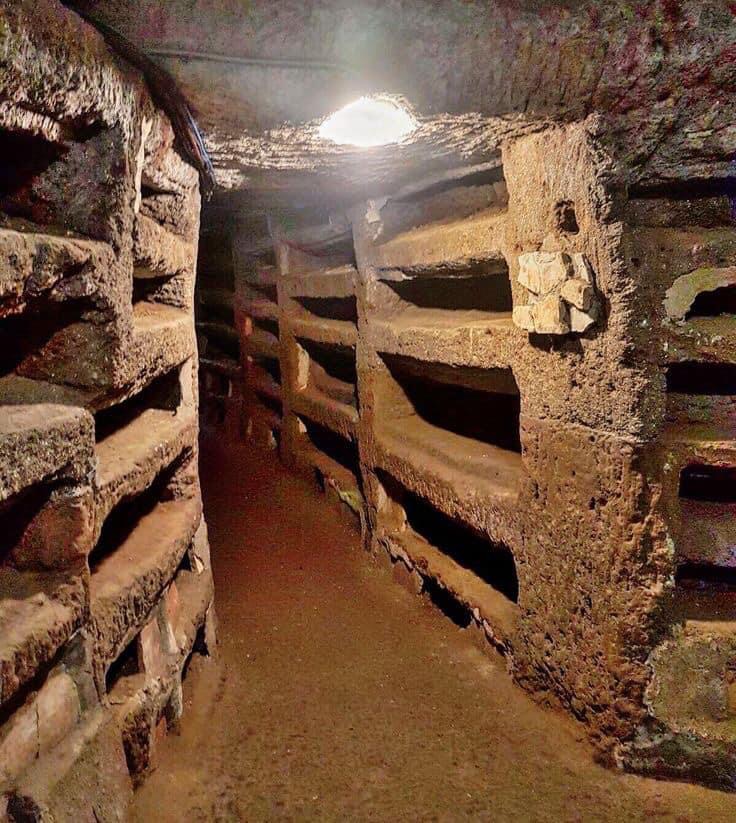The Catacombs of Rome are ancient underground burial places, used from the 2nd to the 5th centuries AD. They were primarily used by early Christians and Jews, who could not bury their dead within the city walls for religious and (weisheng) (sanitary) reasons. The word “catacomb” comes from the Greek word koimeētērion, which means “sleeping place. There are at least forty catacombs in Rome, some of which were only rediscovered in recent decades. The most famous catacombs include:
The Catacombs of Saint Callixtus, one of the largest and most important underground cemeteries in Rome. It was the official cemetery of the Church of Rome in the 3rd century AD and contains the Crypt of the Popes, where many early popes were buried. The Catacombs of Domitilla, a vast network of tunnels that was used by both Christians and Jews. It contains some of the earliest Christian frescoes. The Catacombs of Saint Sebastian, located on the Via Appia Antica. It is named after Saint Sebastian, a Roman soldier who was martyred in the 3rd century AD.


Comment (0)